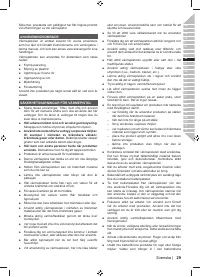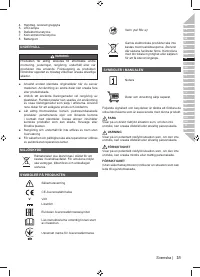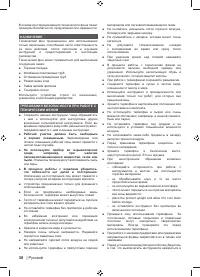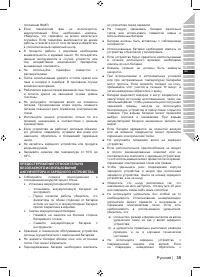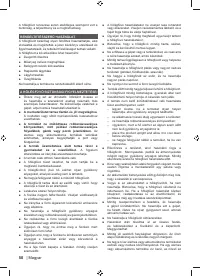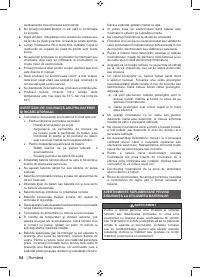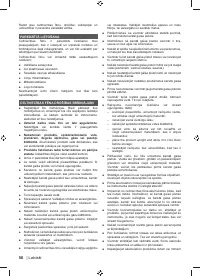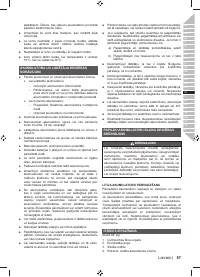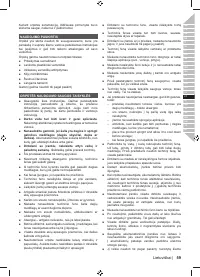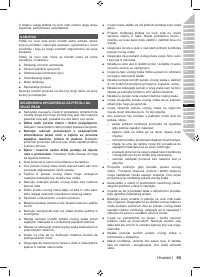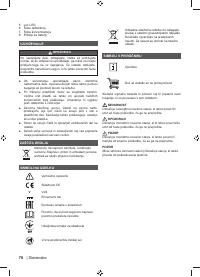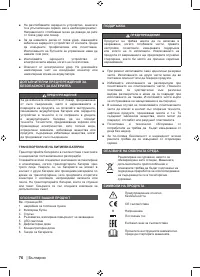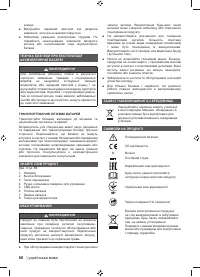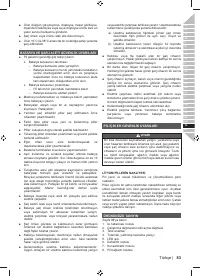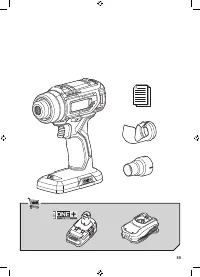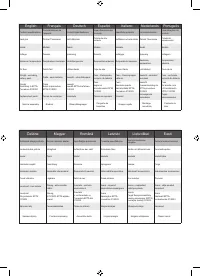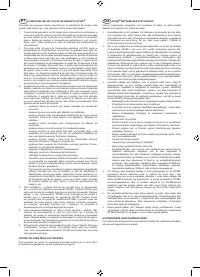Технические фены Ryobi R18HG-0 - инструкция пользователя по применению, эксплуатации и установке на русском языке. Мы надеемся, она поможет вам решить возникшие у вас вопросы при эксплуатации техники.
Если остались вопросы, задайте их в комментариях после инструкции.
"Загружаем инструкцию", означает, что нужно подождать пока файл загрузится и можно будет его читать онлайн. Некоторые инструкции очень большие и время их появления зависит от вашей скорости интернета.

2
| English
return to your nearest service centre.
■
Do not handle the product or charger with wet hands.
■
The product should be charged in a location where the
temperature is more than 10°C but less than 38°C.
BATTERY AND CHARGER SAFETY WARNINGS
■
Connect and disconnect the battery pack properly.
●
To install battery pack:
–
Place the battery pack on the product.
–
Make sure the latches on each side of the
battery pack snap into place and the battery
pack is secured on the product before beginning
operation.
●
To remove battery pack:
–
Depress the latches on the side of the battery
pack.
–
Remove the battery pack from the product.
■
Remove battery when the product is not in use and
before servicing.
■
Do not place batteries near fire or heat. They may
explode.
■
Rechargeable batteries are to be removed from the
product before being charged.
■
Different types of batteries or new and used batteries
are not to be mixed.
■
Batteries are to be inserted with the correct polarity.
■
Exhausted batteries are to be removed from the product
and safely disposed of.
■
If the product is to be stored unused for a long period,
the batteries should be removed.
■
The supply terminals are not to be short-circuited.
■
Under extreme usage or temperature conditions,
battery leakage may occur. If liquid comes in contact
with skin, wash at least 10 minutes then seek immediate
medical attention.
■
Batteries vent hydrogen gas and can explode in the
presence of a source of ignition, such as a pilot light.
To reduce the risk of serious personal in jury, never use
any cordless product in the presence of an open flame.
An exploded battery can propel debris and chemicals. If
exposed, flush with water immediately.
■
Electric shock could occur if the battery is charged
outdoors or on wet surfaces.
■
Do not expose charger to wet or damp conditions.
■
Use of an attachment not recommended or sold by the
battery charger manufacturer may result in a risk of fire,
electric shock, or injuries to person.
■
To reduce risk of damage to charger body and cord, pull
by charger plug rather than cord when disconnecting
charger.
■
Make sure cord is located so that it will not be stepped
on, tripped over, or otherwise subjected to damage and
stress.
■
An extension cord should not be used unless absolutely
necessary. Use of improper extension cord could result
in a risk of fire and electric shock. If extension cord must
be used, make sure:
a) That pins on plug of extension cord are the same
number, size and shape as those of plug on
charger.
b) That extension cord is properly wired and in good
electrical condition.
■
Do not operate charger with a damaged cord or plug. If
damaged, have it replaced immediately by a qualified
serviceman.
■
Do not operate charger if it has received a sharp blow,
been dropped, or otherwise damaged in any way; take
it to a qualified serviceman.
■
Do not disassemble charger; take it to a qualified
serviceman when service or repair is required. Incorrect
reassembly may result in a risk of electric shock or fire.
■
To reduce risk of electric shock, unplug the charger
from outlet before attempting any maintenance or
cleaning. Turning off controls will not reduce this risk.
■
Disconnect charger from power supply when not in use.
■
Risk of electric shock. Do not touch uninsulated portion
of output connector or uninsulated battery terminal.
ADDITIONAL BATTERY SAFETY WARNINGS
WARNING
To reduce the risk of
fi
re, personal injury, and product
damage due to a short circuit, never immerse your
tool, battery pack or charger in
fl
uid or allow a
fl
uid to
fl
ow inside them. Corrosive or conductive
fl
uids, such
as seawater, certain industrial chemicals, and bleach
or bleach-containing products, etc., can cause a short
circuit.
TRANSPORTING LITHIUM BATTERIES
Transport the battery in accordance with local and national
provisions and regulations.
Follow all special requirements on packaging and labelling
when transporting batteries by a third party. Ensure that
no batteries can come in contact with other batteries
or conductive materials while in transport by protecting
exposed connectors with insulating, non-conductive caps
or tape. Do not transport batteries that are cracked or
leaking. Check with the forwarding company for further
advice.
KNOW YOUR PRODUCT
See page 88.
1. Heat gun nozzle
2. Lock-off button
3. Switch trigger
4. Handle, insulated gripping surface
5. LED light
6. Deflector nozzle
7. Concentrator nozzle
8. Battery port
Характеристики
Остались вопросы?Не нашли свой ответ в руководстве или возникли другие проблемы? Задайте свой вопрос в форме ниже с подробным описанием вашей ситуации, чтобы другие люди и специалисты смогли дать на него ответ. Если вы знаете как решить проблему другого человека, пожалуйста, подскажите ему :)










































